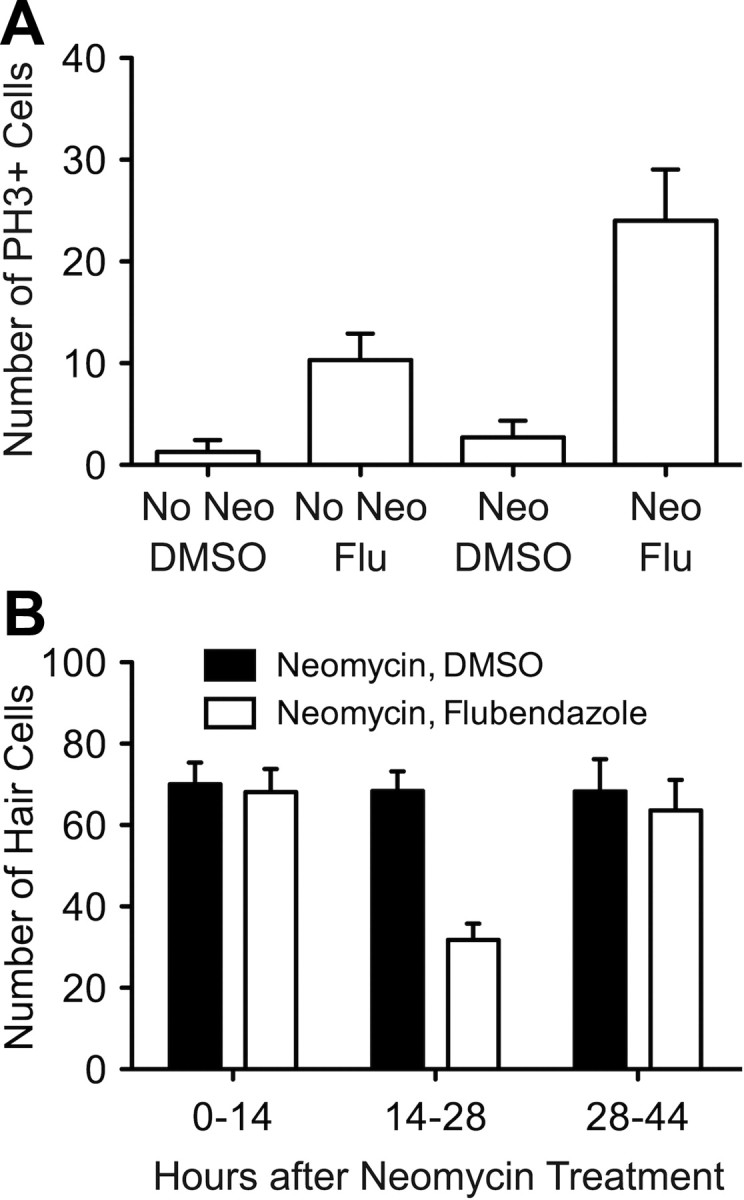Figure 10.

Flubendazole induces increased number of cells in M-phase. A, Five dpf fish were either treated with 400 μm neomycin (Neo) or mock-treated in embryo medium for 1 h, and then exposed to flubendazole (Flu) or vehicle (DMSO) for 48 h. Fish were immunostained with an antibody to phospho-histone H3 to assess the number of cells in M-phase at the time of death. Increased numbers of PH3+ cells are present in flubendazole-treated fish, regardless of whether native hair cells were killed by neomycin or not (p < 0.001) and more labeled cells were seen in neuromasts after neomycin treatment (Neo) than controls after flubendazole exposure. B, Flubendazole reduces hair cell regeneration primarily between 14 and 28 h postdamage. Fish were treated with 400 μm neomycin for 1 h, and then treated with DMSO vehicle or 5 μm flubendazole for one of three time periods (0–14 h, 14–28 h, or 28–44 h after neomycin). Larvae were then held in EM only for the remainder of time before fixation at 48 h and immunostained for GFP+ hair cells. There is a marked decrease in the number of hair cells when proliferating cells are suspended in M-phase specifically during the 14–28 h incubation period after neomycin treatment, but not during other periods. For each fish, seven neuromasts were examined (n = 10 fish/group). Error bars indicate ±1 SD.
